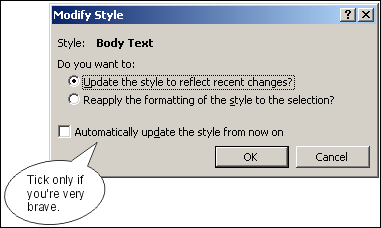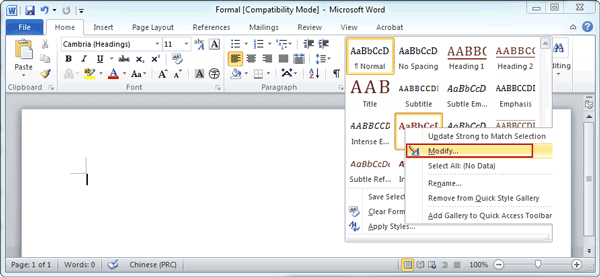

Once you are satisfied with the changes, simply click on OK to exit the Modify Styles dialog box.
Text Effects: Change up the text by adding an outline, shadows, or 3D styles. Shortcut Key: Set up a shortcut key to quickly change text to the header style. Numbering: If your sections need to be numbered or bulleted, use this section to customize how headers are styled. Frame: Set the header as a frame and modify its look & feel. Language: Modify the default language for your headers. Border: Add borders or shading styles to your header. Start Word and display a new blank document. , finding and replacing text, drag and drop, table styles, editing and checking your document. Key skills in this practice are creating a. to accompany your resume that you created in Word Practice 3. Tabs: Further customize indentions by setting tab stops. For Word Practice 4, we will use Word to create a. 
For the purpose of this tutorial, we’ll stick with the basics: font, font size, emphasis (i.e., bold, italic, or underlined), color, alignment, spacing, and indentation. There are many ways to change styles in Word.
CHANGE DOCUMENT SHADED STYLE SET IN WORD HOW TO
Paragraph: Allows further control over spacing and indention. The following steps show how to customize the built-in heading styles in an individual Word document. Font: Provides access to additional font features such as special effects and scaling. To further customize the header style, click on the Format button at the bottom left of the dialog box and choose from any one of the options in the menu that appears. You can also adjust alignment, spacing, and indention. In the dialog box that appears, you can quickly change font properties of the header such as face, size, and color. Note: If you don’t see the Styles section, make sure that the Home tab is selected. Right-click on the style you wish to alter from the Styles section of the ribbon and click on Modify in the menu that appears. So, how do you customize header styles? It’s pretty easy! Whatever it is you’re working on, Word provides the ability to add a more personalized, visually-appealing touch to your documents. 
As a student, they can help you to better organize your term paper or project. As an employee, you may find them useful when developing a detailed report. We use headers within Word documents for a variety of reasons. While pre-defined header styles are already available at your disposal, Word allows you the freedom to further modify these styles so that they fit with the theme or schema of your document. Microsoft Word 2010 provides a variety of options for customizing any document you are creating.







 0 kommentar(er)
0 kommentar(er)
